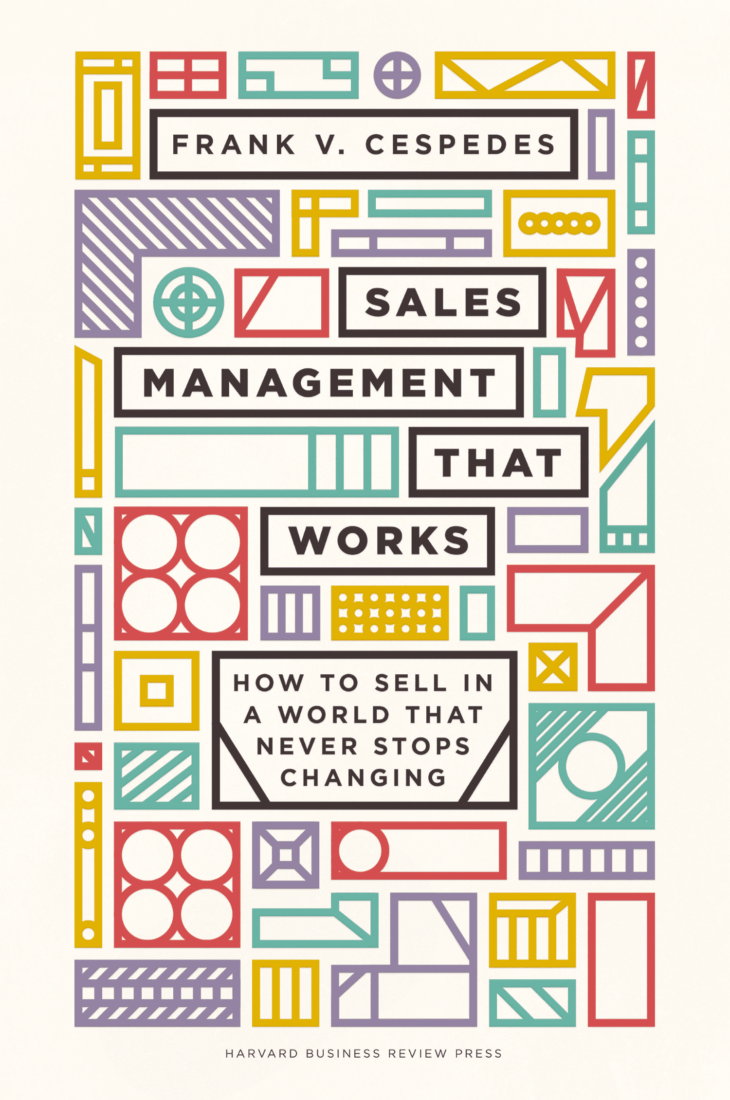New sales realities
26th February 2021 | Frank Cespedes
Business leaders need to understand that it’s the fit of People, Process, Pricing, and Partners that drives sales effectiveness.
Selling is changing. When managers make decisions based on obsolete assumptions, they fall victim to those who do understand cause-and-effect links between buying and selling.
For over a half-century, buying has been framed in terms of a hierarchy-of-effects model: moving a prospect from Awareness to Interest to Desire to Action. The A-I-D-A formula and its many variants are the basis (often, the unconscious basis) for sales activities in most firms. It’s an inside-out process and CRM systems provide data about progression (or not) through that funnel – the “pipeline” metrics that dominate talk about sales.
But buyers now work through parallel activity streams to make a purchase decision. Information sources have changed customer expectations, and many traditional sales practices unwittingly increase customer dissatisfaction. Understanding where customers are, how they navigate between streams in your market, and how to interact with them appropriately is now central to effective selling. In turn, this affects core elements of sales management as follows.

People
As firms confront new buying processes, required sales competencies are changing. Even before the pandemic, sales hiring became steadily more expensive in the past decade and, in the aggregate, is often more expensive than most capex decisions in companies. Similarly, firms spend 20% more per capita on sales training than they do in other functions, yet the ROI is disappointing.
As customers move between streams, a prospect and order touch multiple functions at the selling organization from the buyer’s initial contact through evaluation, purchase, and post-sale activities like billing, warranty, or field service. But at the seller, each function usually has different priorities. Billing is evaluated on receivables, service on case resolution, marketing on lead generation, and so on. This is one reason why “customer focus” is a perennial slogan but not a behavioural reality at most firms.
Cross-functional coordination – and its evil twin, misalignment – is pervasive in selling efforts today. In this situation, salespeople often become the de facto integrator, because it’s typically the rep who made the sale that gets called when the buyer has a request or complaint and who must then get other functions to respond. But this aspect of selling is often absent from training initiatives, and that hurts productivity. Research indicates that, on average, reps spend only about a third of their time actually interacting with clients or prospects (either online or in-person) and about two-thirds of their time on non-selling activities such as service, internal meetings, and administrative tasks.
Process
Without a coherent sales model, selling is a series of individual efforts, not a scalable process. Despite advances in technology, most sales models are the ad hoc accumulation of years of reactive decisions (usually by different managers pursuing different goals) and incapable of dealing with the reality that buying is dynamic. Going forward, many companies must reconfigure their selling and no single tactic (such as a given selling methodology or “big data” analytics) will do this. Aligning buying and selling is a process, not a one-shot deal.
Consider lead generation by email, content marketing, and other means. Traditionally, these were Marketing activities, not Sales. But these lines are blurring, putting pressure on companies to rethink sales models, metrics, and the relationship between marketing and sales – two functions that are more interdependent but different in their procedures and mindsets. To know when, what, and how to change a sales model, you need relevant analytics.
For instance, a common metric used in evaluating sales is the expense-to-revenue ratio or, its sibling, Customer Acquisition Cost (CAC). These measures shed light on the relative cost efficiency of selling activities, but not their cost effectiveness, which is a more complex relationship between revenues and margins achieved at that cost level and the types of customers acquired through that sales model. In many SaaS businesses using an inside sales model, CAC metrics say a lot about sales productivity. However, in other markets and sales models, these measures may be a deceptive sidebar to the real story, lead you to cut selling costs and prices, and unwittingly accelerate a downward spiral in terms of both customer quantity (sales volume) and quality (who buys at accounts). Either way, the issue is knowing what data is important and how to use it in the relevant sales model.
Firms spend 20% more per capita on sales training than they do in other functions, yet the ROI is disappointing.
Pricing
In a changing landscape, pricing can build or destroy profits faster than any other business action. When you lose a deal, how often do your salespeople say, “Our price is too high”? Few customers wake up wanting to pay a higher price, but most customers do seek value, and it’s the responsibility of the sales force to frame and deliver the value proposition, including price.
Buying changes have made value-pricing approaches more possible in many categories. Ink for fountain pens sounds like a declining – indeed, terminally declined? – industry. Yet J Herbin sells ink for love letters at $28 for 50 millilitres, while Sailor Pen sells Kobe Ink #4 Kitano Ijinkan Red at $30 for 50ml (the ink has a slight gold sheen), and other inks at more than $40 for a 50ml bottle – more than five times the cost, on a per-millilitre basis, than Glenlivet’s 18-year-old Scotch. Every day, some companies manage to extract price advantages that others do not.
A key is price testing because, in today’s information-rich markets, inertia is costly. Sites like Edmunds.com, Kayak.com, and others facilitate price comparisons in their categories and Amazon distils thousands of SKUs for consumer package-good products into price-per-ounce comparisons on its site. But there are also more tools for testing pricing structures that optimize value and training salespeople on how to frame value in conversations with prospects and customers.
Partners
Selling now also means working with channel partners who are influential during the buying journey and after the sale. Options have increased and so has the managerial complexity. Customers are unbundling many traditional channel arrangements as they switch streams. So, face the facts, avoid a false dichotomy of online versus offline, and know the implications for your business.
First, some facts. Much of the excitement about ecommerce and digital marketing is tied to the notion of virality: your post on social media goes viral, millions of people see it and you have not spent much to do that. But a study of messages on Twitter, Yahoo and others found that more than 90% did not diffuse at all, about 4% were shared once, and fewer than 1% more than seven times. Other studies indicate that most internet communication is between people who live near each other and driven by what researchers call “homophily”, the common-sense observation that birds of a feather (people with similar interests) indeed flock together. The way people use the internet is largely determined by where they live, the presence of open stores nearby, their neighbours, and sales taxes.
‘Customer focus’ is a perennial slogan but not a behavioural reality at most firms.
Moreover, online and offline interactions have important implications. Shoppers who pick up their online orders in store spend more – up to 25% more in some studies. About one-third of clothing ordered online is returned versus 8% for items bought in-store, and processing a return in the store typically costs half of what it costs when an online order is shipped back to the distribution centre.
An omnichannel buying world requires a multi-channel response. But managers must rethink the role of channel partners in their sales programs, choose and manage partners so they align with buying realities, and utilize the broadening array of tools now available for these selling tasks.
Because of the central role of customer acquisition in a company, changes in selling requirements have wider implications. Andrew Carnegie was once asked, “Which element is most important for the success of a business: brains, capital, or labour?” His reply: “Which leg of a three-legged stool is most important?”
Effective selling is ultimately an organizational outcome. It’s the fit of People, Process, Pricing, and Partners that drives sales effectiveness and, in services-dominated economies, improving sales productivity has social as well as profit impact.


